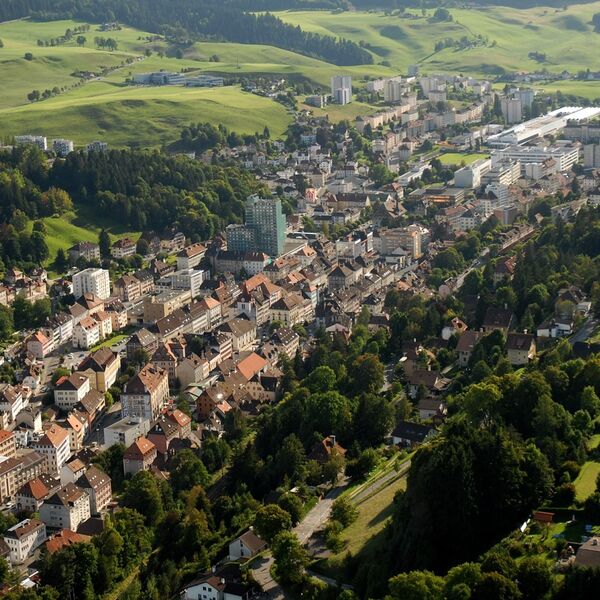La Chaux-de-Fonds / Le Locle
Stadtlandschaft Uhrenindustrie
Am 27. Juni 2009 wurde die Uhrenstadt Le Locle und La Chaux-de-Fonds von der UNESCO als Weltkulturerbe anerkannt. In der Mutterstadt und der Uhrenmetropole finden große Veranstaltungen statt.
Die beiden Städte in den Neuenburger Bergen zeugen mit ihrer außergewöhnlichen Stadtplanung von einem ganzen Stück Industriegeschichte, das von der UNESCO als Weltkulturerbe anerkannt ist. Die Uhrmachertätigkeit und ihre Entwicklung sind eng mit den verschiedenen Wohnbereichen verbunden, in einem rationalen und funktionalen Ganzen. Die soziale Dimension steht im Mittelpunkt ihres Entwurfs, ihr schachbrettartiger Grundriss ist zudem auf Gleichberechtigung angelegt...
Die Städte La Chaux-de-Fonds und Le Locle sind von und für Uhrmacher gebaut. Davon zeugt die Handwerks- und Industriegeschichte, die sich in ihren städtischen Bauten widerspiegelt. Ein Rundgang durch die beiden Städte lässt erkennen, wie stark die Uhrmacherei über die Jahre ihrer gesamten Entwicklung hinweg in die Stadtlandschaft eingebunden wurde.
Beim Betrachten der Fassaden der Bauernhöfe am Rand und im Innern der Städte kann man sich gut vorstellen, wie die als Uhrmacher tätigen Bauern des 18. Jahrhunderts hinter dem "schönen Fenster" über ihrer Arbeit sassen. Die später angebauten Arbeiterwohnungen umfassen zahlreiche helle Zimmer, in denen die Werktische standen. Andere Gebäude weisen Fensterreihen auf, hinter denen die Etablisseure arbeiteten, die das Bindeglied zwischen Uhrmachern und Händlernwaren. Diese Epoche der Uhrenindustrie entwickelte sich über einen grossen Teil des 19. Jahrhunderts hinweg. Danach entstanden die ersten Fabriken, in denen sich auch die Wohnungen der Patrons und ihrer Arbeiter befanden, und die bis heute in den schachbrettartig verlaufenden Strassen von La Chaux-de-Fonds und Le Locle zu finden sind. Später - und bis heute - wurden grosse moderne Manufakturen an den Stadtgrenzen errichtet.
Nirgendwo sonst auf der Welt hat die Uhrenindustrie so deutliche und gut erhaltene Spuren ihrer Entwicklung in städtischem Umfeld hinterlassen. Der Bund wurde sich dessen bewusst und seit 1984 sind La Chaux-de-Fonds und Le Locle als Städte von nationaler Bedeutung anerkannt. Im Dezember 2004 ging die Schweizer Regierung noch einen Schritt weiter und schlug die Kandidatur der beiden Städte aufgrund deren einzigartiger Symbiose von Städtebau und Uhrenindustrie zur Aufnahme auf die Liste des Weltkulturerbes vor. Die auf der Welterbe-Liste verzeichneten Stätten haben einen aussergewöhnlichen universellen Wert. Sie reflektieren die Vielfalt der menschlichen Kulturleistungen und der Naturphänomene.
Im Dezember 2007 reichte die Schweiz ihre offizielle Kandidaturein und am 27. Juni 2009 erfolgte von den Entscheidungsgremien der UNESCO die Aufnahme.
Jede Stadt verfolgt ihre eigene industrielle Entwicklung. In den Labors und Reinräumen werden modernste Uhren hergestellt, aber auch Produkte, die auf dem bewährten mikrotechnischen Know-how der Region und der sich stark entwickelnden Nanotechnologien beruhen, während die Uhrmacher an ihrenWerktischen nach wievor ihr altüberliefertes Handwerk ausüben.








